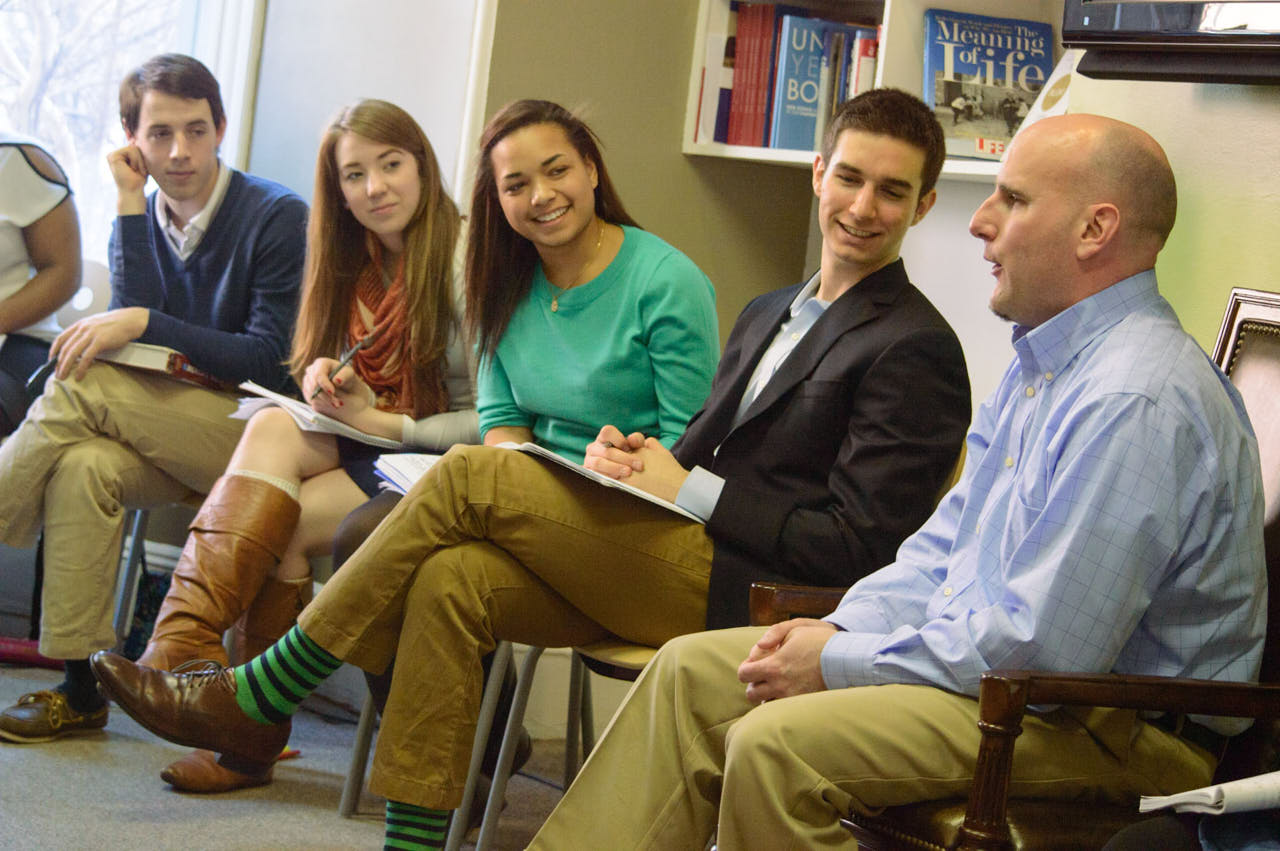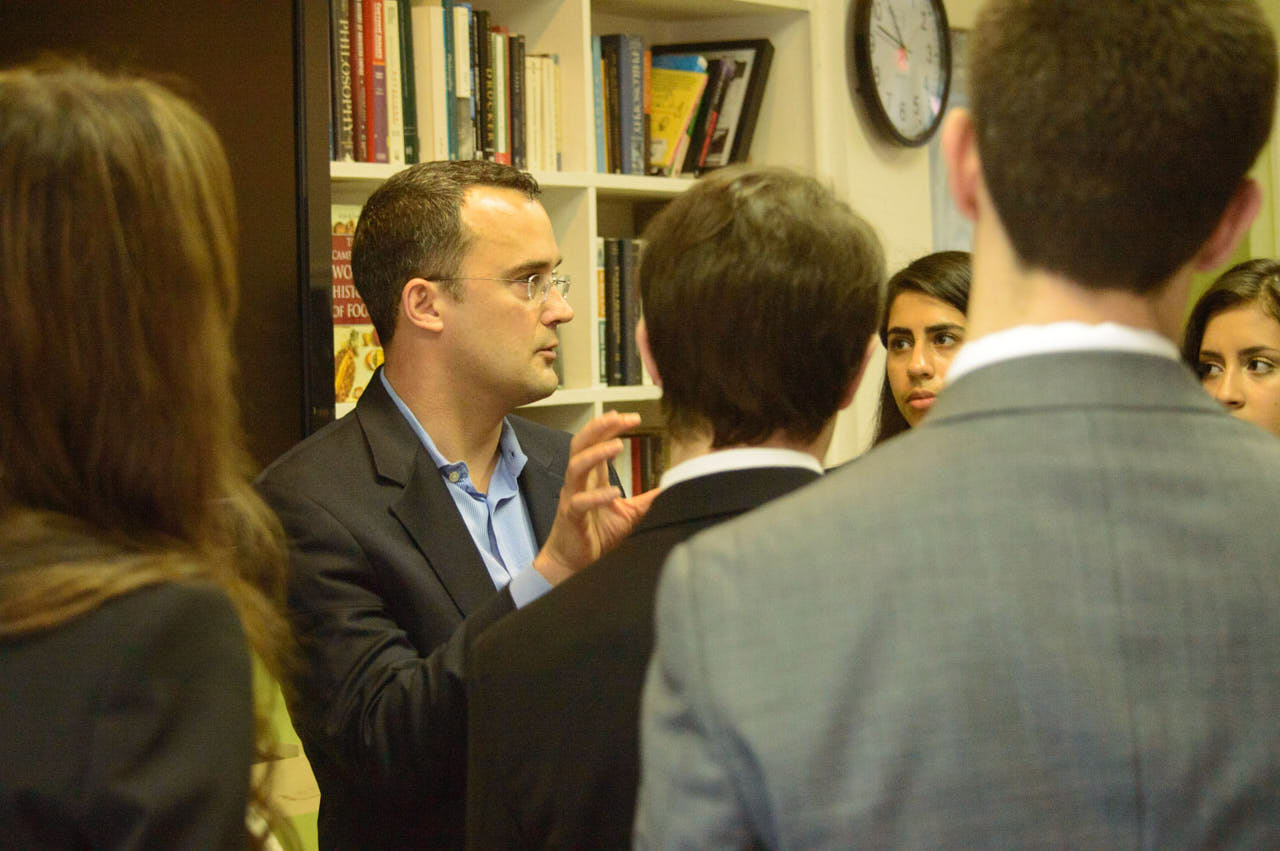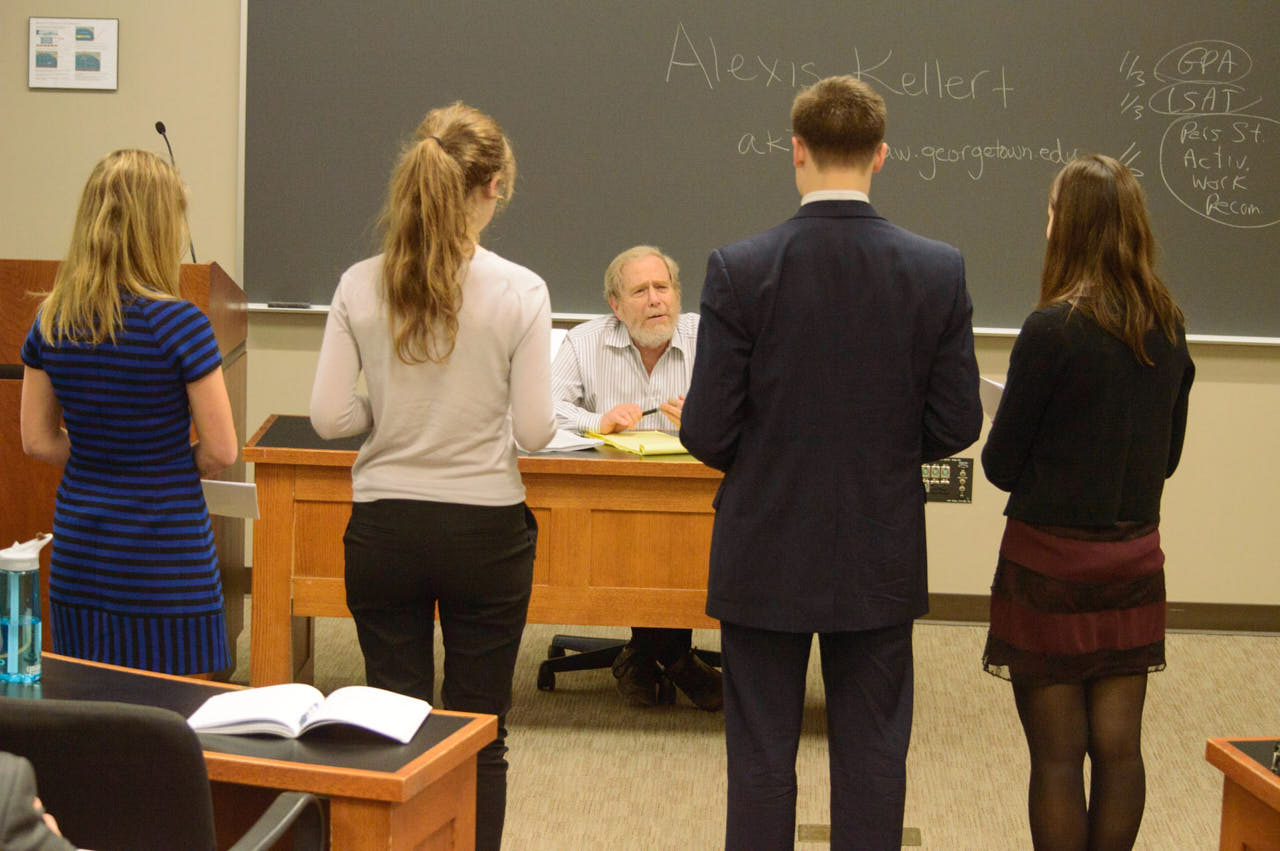SPRING 2014 TAKES AIM AT LEADING CONSTITUTIONAL SCHOLAR IN SECOND AMENDMENT CASE STUDY
How would you go about convincing a Supreme Court Justice that your view is correct? In this week’s Second Amendment case study, our students answered that very question.
The case: DC v. Heller, the landmark 2008 Supreme Court case that established a constitutional right to keep and bear arms. (To read more about the case and the Supreme Court opinions, click here.)
The assignment: in teams of four, act as a Supreme Court Justice’s law clerks. Draft a two-page summary of the opinion you think the Justice ought to write, and then be prepared to defend it.
The expert: Professor Michael Seidman, Carmack Waterhouse Professor of Constitutional Law at Georgetown University Law Center, played a Supreme Court Justice. Seidman has experience as a Supreme Court clerk: he was law clerk for the first African American Justice Thurgood Marshall. He also has experience with persuasive arguments; for example, check out this controversial piece on The New York Times op-ed page.
The tutors:
- On Monday, students and faculty engaged in an interactive lecture/discussion that explained the Constitutional and historical background to the Heller case. They began to wrestle with questions like What does “Right of the People” mean? Is the right individual or collective? What does “Keep and Bear Arms” mean? What kind of arms? For what purpose? What is a “Well-Regulated Militia”? A state-organized entity or a group of pre-existing individuals? What does “Security of a Free State” mean? The U.S. or an individual state? What is the relationship between the prefatory and operative clauses? What does precedent say, if anything? What else is important to consider?

- On Wednesday, the students met with Ladd Everitt, the Director of Communications at the Coalition to End Gun Violence, a leading gun control group. Everitt has been featured in a number of media outlets (click here to see him on The Daily Show; click here to hear him on NPR’s The Diane Rehm show) and argued passionately for his side of the story. His arguments also included Constitutional justifications for gun control.

- On Friday morning, the students met with Clark Neily, the attorney who brought the Heller case to the Supreme Court. He was responsible for recruiting the plaintiffs (originally there were six), served as their co-counsel, and was at the table during the Supreme Court oral arguments. Neily not only argued articulately for gun rights; he also shared his libertarian philosophy with the students, parrying their attacks with collegially-worded anecdotes.

The Master Class: On Friday afternoon, we traveled to Professor Seidman’s classroom, and one by one the groups of law clerks sat in front of “Justice” Seidman. He interrupted, cajoled, considered, and ultimately praised their efforts in a virtuosic display of Socratic, law-school-inspired teaching. (Any students who did not enjoy the experience should think twice about careers in the law!) After the Master Class, students asked Professor Seidman questions about jurisprudence, the role of the Court in government, and his experience clerking for Justice Marshall. By the end of the session, Professor Seidman proclaimed that they’d all make great Georgetown Law students!
After the experience, the students reflected on their successes and failures. Leaving both exhilarated by the experience, and compelled to work even harder for their next presentation, they trooped to the residence to enjoy a pizza dinner.
Next week: Ukraine and speeches with former Hillary Clinton speechwriter Lissa Muscatine.















